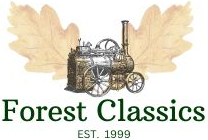SHOP BY MAKE
Blog
The Roots of Model Steam: Where Miniature Machines First Roared to Life.
Long before electric motors and lithium batteries powered our modern gadgets and vehicles, there was steam—hissing, chugging, powerful steam. It drove the factories, powered the trains, and changed the world. But steam didn't just stay on the factory floor or the railway tracks—it found its way into living rooms, classrooms, and workshops in the form of model steam engines. Today, these tiny engines are prized by collectors and hobbyists, but their history goes much deeper than a simple pastime. Let’s take a journey back in time to explore the fascinating roots of model steam. Born from the Industrial Revolution.The story starts in the 18th century, when the world was undergoing a seismic shift thanks to steam power. Think names like Thomas Newcomen, who developed one of the first practical steam engines in the early 1700s, and James Watt, who improved it dramatically a few decades later. These full-size steam engines powered mines, factories, and eventually, locomotives and ships. As the technology advanced, so did the desire to understand and explain it. Engineers and inventors began creating miniature working models of steam engines. These weren’t just toys—they were educational tools and proof-of-concept machines, used to demonstrate the principles of thermodynamics and mechanics in a hands-on, tangible way. From Scientific Tool to Victorian Toy.By the time the Victorian era rolled around in the 19th century, steam was everywhere—and people were fascinated by it. As engineering became a celebrated field and invention turned into a public spectacle, model steam engines transitioned from industrial demos to high-end toys. Wealthy families often gave their children exquisitely crafted steam-powered engines—complete with polished brass, intricate piping, and small spirit burners. These were functional, miniature versions of real steam machines, often capable of powering tiny tools or vehicles. Rise of the Hobby.The real turning point came in the early 20th century, when model steam engines became more affordable and accessible. Advances in machining and mass production meant you didn’t have to be an engineer (or fabulously wealthy) to own one. Companies like:
began producing kits and pre-built engines for hobbyists. Steam trains, traction engines, marine engines—you name it, someone was building a scale model of it. These weren’t just toys anymore. They were passion projects, teaching tools, and beautiful pieces of mechanical art. Why It Still Matters.Even in our digital age, model steam remains a beloved niche. It’s not just about nostalgia—it’s about mechanical understanding, hands-on learning, and the sheer joy of building something that moves. Ask any model steam enthusiast, and they’ll tell you: there’s something magical about lighting a tiny boiler, hearing that first puff of steam, and watching a miniature piston start to move. It’s a direct connection to the spirit of invention that powered the world into the modern age. In a Puff of Steam, History Lives On.Model steam may have started as a way to explain and explore new technology, but over time it became its own world of wonder. Whether you're restoring a vintage Mamod engine, building your own from scratch, or simply admiring one on a shelf, you're part of a tradition that goes back over 250 years. So the next time you see a little engine chugging away on a tabletop, remember: it’s not just a toy. It’s a tribute to human ingenuity, curiosity, and the power of steam. Looking to get your first model steam engine? Check out the Wilesco range by clicking here.
|
Blog SearchTopicsAbout the Authors |




















